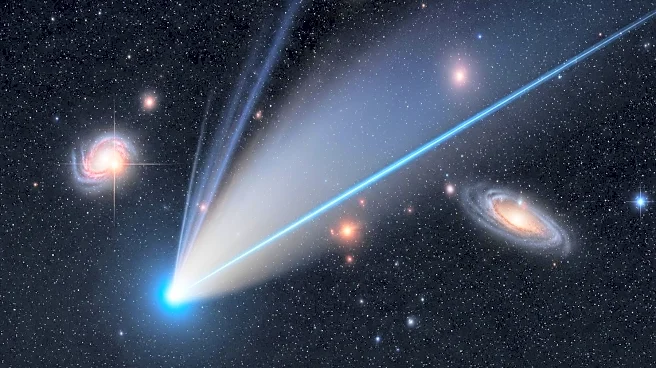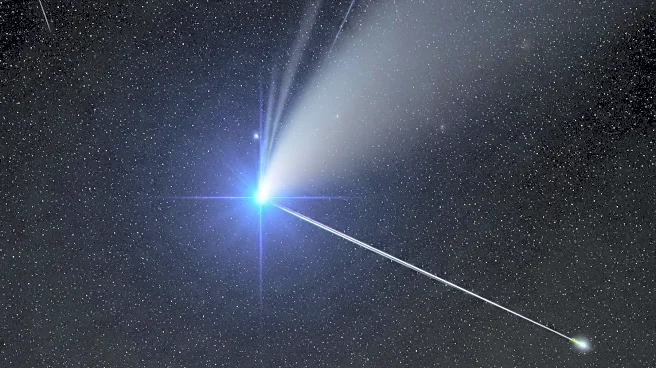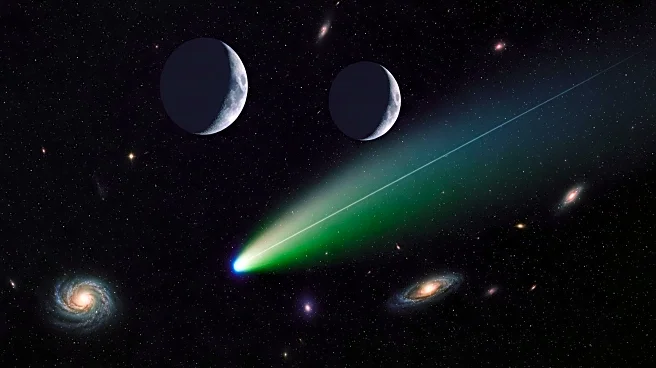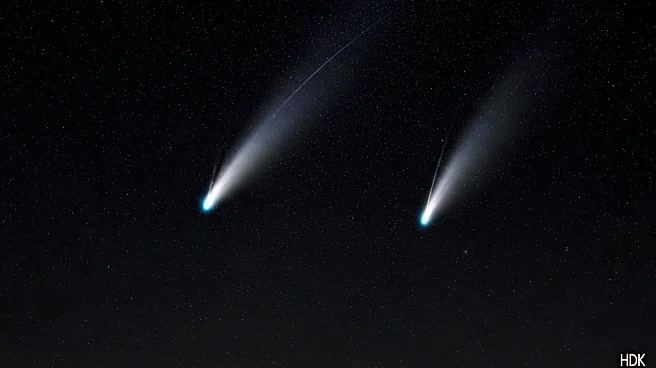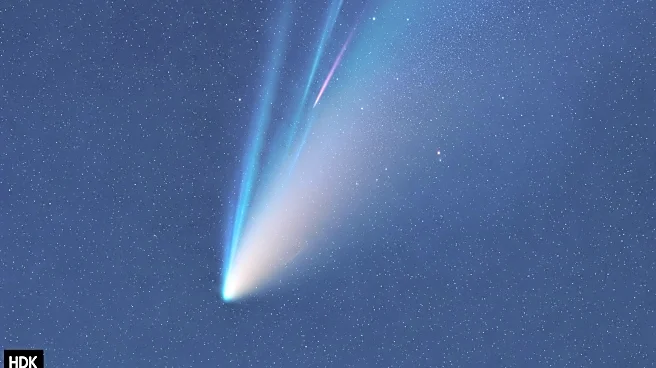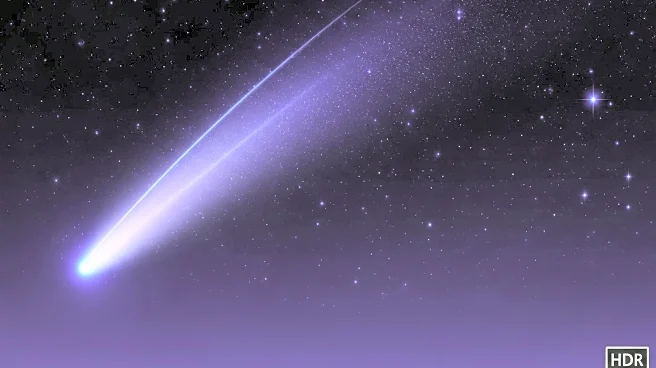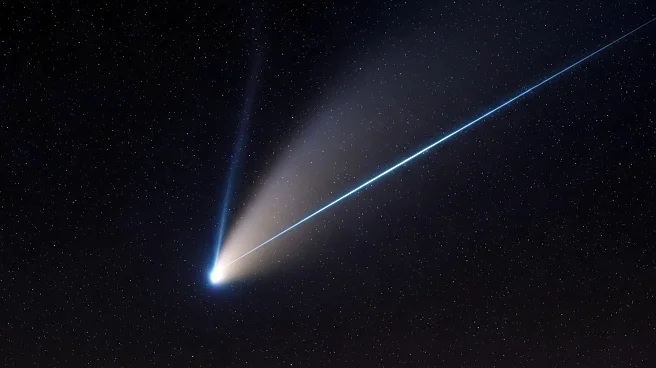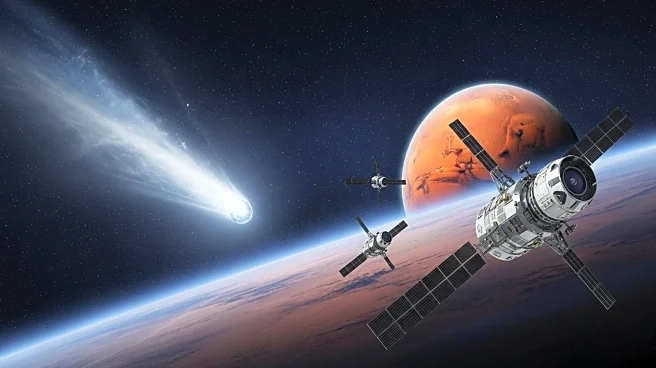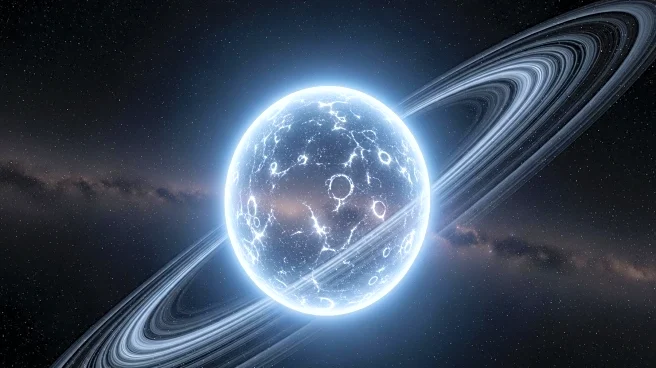What's Happening?
Comet C/2025 A6, also known as Comet Lemmon, is nearing a close approach to Earth, potentially becoming visible to the naked eye in October. Discovered on January 3 at the Mt. Lemmon Observatory in Arizona, the comet has significantly brightened, moving from a magnitude of +21.5 to +7. This increase in brightness raises hopes that it could be seen without telescopes from dark sky locations. Currently, the comet is visible as a diffuse light through binoculars, with astrophotographers capturing detailed images of its bright nucleus and ion tails. The comet will make its closest approach to Earth on October 21, passing approximately 55 million miles away, before reaching its closest point to the sun on November 8.
Why It's Important?
The visibility of Comet Lemmon offers a rare opportunity for both amateur and professional astronomers to observe a celestial event that won't recur for another 1,351 years. This event highlights the importance of astronomical research and public interest in space phenomena. The comet's approach provides a unique chance for educational outreach and engagement with the public, fostering interest in astronomy and science. Additionally, the data collected from such events can contribute to our understanding of cometary behavior and the dynamics of the solar system.
What's Next?
As Comet Lemmon continues its journey, it will reach perihelion on November 8, after which it will begin a long elliptical orbit that will take it far from the inner solar system. Observers are encouraged to view the comet in the early morning hours of October, particularly between the constellations Ursa Major and Leo Minor. The comet's visibility and brightness will be closely monitored by astronomers, and further observations will help refine predictions about its future trajectory and behavior.
Beyond the Headlines
The observation of Comet Lemmon underscores the unpredictable nature of comets, which can experience sudden outbursts or changes in brightness. This unpredictability adds an element of excitement and challenge to astronomical observations. The event also serves as a reminder of the vastness and complexity of the solar system, encouraging a broader appreciation for the natural world and our place within it.

